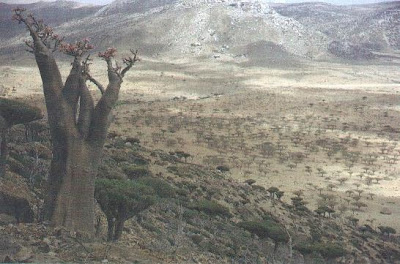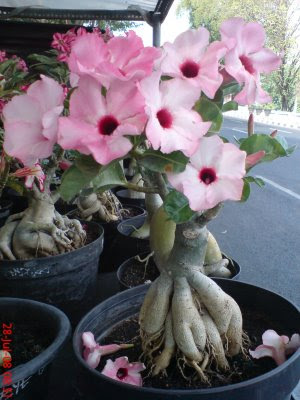Moses beard

These plants, called Moses beard because it shapes such as the beard of Moses, this plant does not need planting media. I live in the only place in the basket as in the picture
Bonsai Tree
To create a Bonsai plants such as this requires diligence and patience for several years but the results can be enjoyed
Black Javaness Sente
I found this plant when i go to Sarangan Lake in Solo ,Middle Java
SCIRPUS ANNUS
Usually growth in the wild jungle with glossy green stem and very malleable subsection gilded
Clitoria ternatea
Clitoria ternatea is a vine native to tropical and equatorial Asia, but has been introduced to Africa, Australia and the New World. It grows well in moist neutral soil and requires little care. It is grown as an ornamental plant and as a revegetation species (e.g., in coal mines in Australia). It fixes nitrogen and is therefore also used . in southeast asia the flowers are use to colour food. In Malay cooking, an aqueous extract is used to colour glutinous rice for kuih tekan (also known as pulut seri kaya) and in nonya chang. In Thailand, a syrupy blue drink is made called nam dok anchan น้ำดอกอัญขัญ. Some varietes also have white flowers.
Read more...Costus speciosus
Costus speciosus or crape ginger is possibly the best known cultivated species of the genus Costus. This plant is native to southeast Asia, especially on the Greater Sunda Islands in Indonesia. Costus differs from the common ginger by having only one row of spirally arranged leaves. The species reproduces vegetatively by rhizome and birds disperse seeds when they feed on the fruits. While it is native to many Pacific Islands, it is an introduced invasive species on others, including the Cook Islands, Fiji, and Hawaii. It is cultivated in India for its medicinal uses and elsewhere as an ornamental. The plant has many historical uses in Ayurveda, where the rhizome has been used to treat fever, rash, asthma, bronchitis, and intestinal worms. It is mentioned in the Kama Sutra as an ingredient in a cosmetic to be used on the eyelashes to increase sexual attractiveness. C. speciosus has a large number of common names in many languages, including isebsab (Palauan), keukand (Hindi), pakarmula (Gujarati), pushkarmula (Marathi and Sanskrit), and kostam (Tamil).
Read more...Clitoria
Clitoria (also known as Aparajita in India) is a genus of flowering plants that are insect pollinated. These plants are native to tropical and temperate areas of the Old and New World including southeast Asia, where the flowers are often used as a food dye. The name refers to the unusual shape of the flowers. In animal tests the methanolic extract of Clitoria ternatea (Butterfly pea) roots demonstrated nootropic, anxiolytic, antidepressant, anticonvulsant and antistress activity. The active constituent(s) include Tannins, resins, Starch, Taraxerol & Taraxerone. Clitoria ternatea root extracts are capable of curing whooping cough if taken orally. The extract from the white-flowered plant can cure goiter. Its roots are used in the ayurveda system of Indian medicine. Read more...
Agathis Australis(New Zealand Kauri)
The genus Agathis, commonly known as kauri or dammar, is a relatively small genus of 21 species of evergreen trees in the very ancient Araucariaceae family of conifers. While initially widespread during the Jurassic period they are now found only in small areas of the southern hemisphere. The trees have characteristically very large trunks and little or no branching for some way up. Young trees are normally conical in shape, only upon maturity does the crown become more rounded or irregularly shaped.
The bark is smooth and light grey to grey-brown usually peeling into irregular flakes that become thicker on more mature trees. The branch structure is often horizontal or when larger, becoming more ascending. The lowest branches often leave circular branch scars as they fall off from the lower trunk.
The juvenile leaves in all species are larger than the adult, more or less acute, varying among the species from ovate to lanceolate. Adult leaves are opposite, elliptical to linear, and very leathery and quite thick. Young leaves are often a coppery-red, contrasting markedly with the usually green or glaucous-green foliage of the previous season. The male pollen cones appear usually only on larger trees after seed cones have appeared. The female seed cones usually develop on short lateral branchlets, maturing after two years. They are normally oval or globe shaped. The trees are the source of Dammar Gum. Seeds of some species are attacked by the caterpillars of one of the most primitive of all living moths, Agathiphaga.
Read more...Phalaenopsis
The species can be classified into two groups :
*A group with a long, branched inflorescence (up to 1 m long) and large, almost round flowers with rose or white tints.
*A group with short stems and less rounded, waxy flowers with more pronounced colors.
In terms of particular lifeform terminology, one can also characterize these plants as hemicryptophyte or chamerophyte :
* [[hemicryptophyte]] (abbr.: hemicr.) : biennial or perennial plants with herbaceous stems. These stems die off after the growing season, while the shoots survive at soil level. The resting buds are just above or below soil level.
* [[chamaephyte]] (abbr. cham.) : low-growing plants with herbaceous and/or woody stems, that persist for several years. Their buds are on soil level or just above; but never above 50 cm.
The genera ''Doritis'' Lindl. and ''Kingidium'' P.F.Hunt are now included in ''Phalaneopsis'', based on DNA-evidence (according to the World Checklist of Monocotyledons, Royal Botanical Gardens, Kew) (See also ref 1). However this is not implicitly accepted by every specialist in this field.
Intensive cross-fertilization has produced a great number of [[Hybrid (biology)|hybrids]] in all colors and variations. These are usually more adaptable to artificial conditions than their botanical ancestors. Most are hybrids of ''Phalaenopsis amabilis'' with ''Phalaenopsis schilleriana'' or ''Phalaenopsis stuartiana''.
Tree of life
Last weekend I was gifted with the opportunity to experience the most spiritually grounded place. Between the majestic life force of this old gal, breeze swept views, seemingly endless grounds filled with beautifully moving sights to ponder, and quiet places to just let go, my mind has shifted open to a new world of possibilities.
Echinacea Purpurea
Begonia kelimutuensis


New Spesies Find
Begonia kelimutuensis
Find in "Taman Nasional " Kelimutu Flores Indonesia
To read more see www.kompas.com
Adenium socotranum

Adenium socotranum, Socotra, with Dracaena cinnabari. This magnificent adenium is virtually unknown in cultivation. Photo: John Lavranos.
Rose climbing on the archway

Roses are just the best (and can be the worst) plants in any garden.
Adenium somalense var.somalense

Adenium somalense var.somalense east of Bargal, Somalia Photo: Myron Kimnach.
Adenium somalense var.somalense

Adenium somalense var.somalense, Lake Baringo, Kenya. The conical caudex is diagnostic. Photo: Thomas A.Wiewandt.
pakis monyet
 does he like a monkey?
does he like a monkey?
his name is pakis monyet
owner :Mr Dedi
address :Jl. Garuda II No. 2 Perum Cileduk Indah II
Cileduk, Tangerang 15159, Banten
Indonesia
arabicum
 o l d e r t h a n y o u ?
o l d e r t h a n y o u ?if you think this arabicum is very old, you're wrong
its just 4 year old
owner:adventmardani
hot body

you can imagine this?
whatever your imagine just like you are.
i think its sexy, just like you.
owner : adventmardani




























